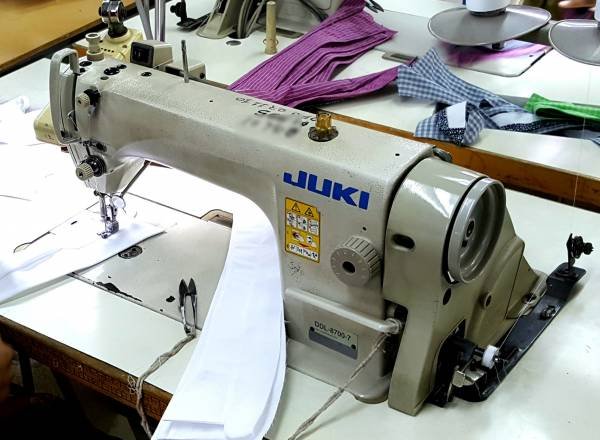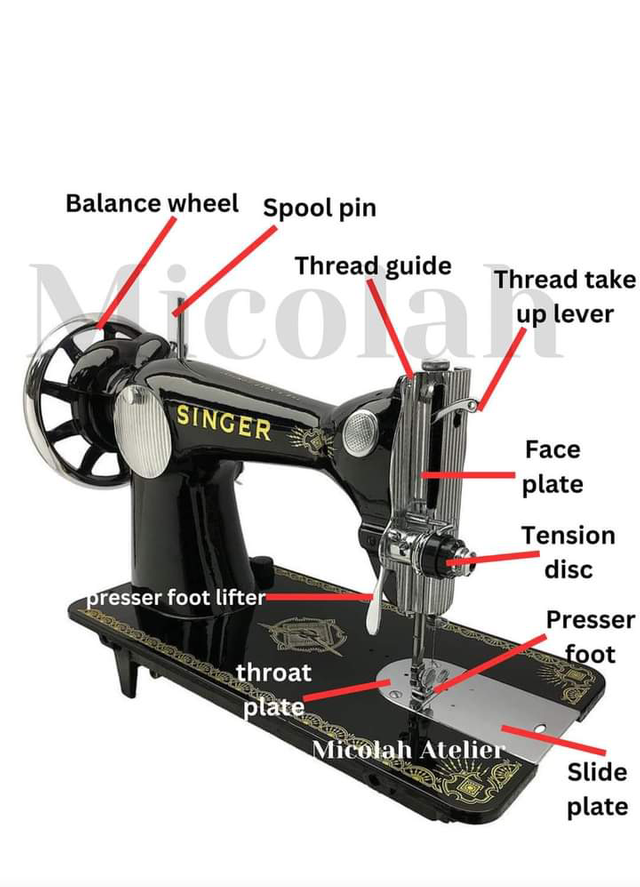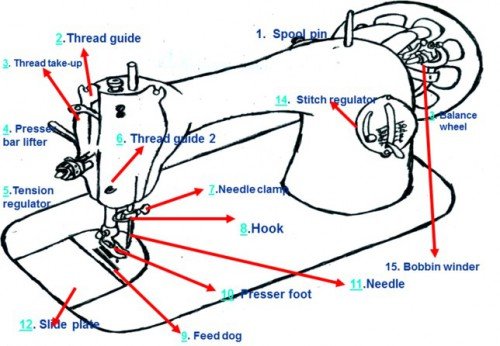
The sewing machine is the most important element in the garment industry. It minimizes laborious tasks. By using sewing machines we can get more standard quality garments within a short time.
A sewing machine is a mechanical device that sews fabric together with thread. Sewing machines were invented during the first Industrial Revolution to decrease the amount of manual sewing work performed in clothing and other textile-related businesses. The sewing machine has since undergone several design changes, but the basic function remains the same.
Sewing machines can help you create a variety of projects. It can be used to create clothing, accessories, and home goods. Sewing machines can also be used to repair clothes and accessories. Sewing machines can be used to create unique and personalized items.
There are different parts of a sewing machine, where one part is related to the other parts.
Parts of the Sewing Machine
A sewing machine is a complex machine with many different parts. The most important part of the sewing machine is the needle. The needle is what actually sews the fabric together. The other parts of the sewing machine are there to help the needle do its job.
The names of the different parts of a sewing machine are given below:

Spool holder
Bobbin
Bobbin case
Thread guide
Tension regulator
Thread take-up lever
Pressure-bar lifter
Stitch length regulator
Balance wheel
Bobbin Winder
Slide plate
Feed dog
Pressure foot
Needle calm
Needle
Power switch
Foot pedal
Back Sew Button
Bobbin Winder

Functions of Sewing Machine Parts
The function of the different parts of the sewing machine is given below:
Spool Holder
The main function of the spool holder is to control the thread direction and hold the spool. The spool holder may be in the horizontal or vertical direction. Sometimes a sewing machine has more than one spool holder when a decorative stitch is needed.
Bobbin
The bobbin is a small spindle that is wound with thread. Bobbin supplies the bottom thread during the stitch formation.
Bobbin Case
The bobbin case holds the bobbin. The hook of the bobbin case catches the previously produced needle loop and moves over the bobbin case. As a result, a stitch is formed by the interlacing of bobbin thread & needle thread.
Thread Guide
A thread guide is used to control the direction of the thread. It also helps plenty of supply of thread
Tension Regulator
It is used to control tightness or looseness of the upper thread to avoid puckering problems.
Thread Take-Up Lever
The main function of the thread take-up lever is threading the sewing needle and maintaining the proper tension. If the thread take-up lever is incorrect, the thread will knot up, broken & jam in the machine.
Pressure Bar Lifter
The pressure-bar lifter is used for raising and lowering the pressure foot.
Stitch Length Regulator
The main function of the stitch length regulator is to maintain the length of the stitch during sewing. Stitch length may vary depending on the fabric type and sewing thread that is used on it.
Balance Wheel
The main function is to raise and lower the needle through manual labor. It is used when an extremely thick piece of fabric is required to be sewn. In the domestic sewing machine, It also helps to wind the sewing thread to the bobbin. It is situated on the right side of the machine.
Slide Plate
It is a rectangular shape that is situated beside the pressure foot, it helps the removal of the bobbin case without lifting the machine.
Feed Dog
It helps to pass the cloth through the machine in a forwarding direction during the sewing.
Needle and Needle Bar
The main function of the needle is to form the stitch during sewing the cloth. The needle fits in the needle bar which holds the needle with a small screw.
Pressure Foot
It is used to put pressure on the fabric during sewing. It helps to prevent wrinkles that could mess up the stitch.
Power Switch
The sewing machine is operated sometimes by electricity and manual labor. A power switch is used to supply the electricity to the machine. Normally Power switch is on the right side of the machine. The main function of the power switch is to turn on and off the machine. In the modern sewing machine, it gives light to the user to see properly when the machine is turned on.
Foot Pedal
It controls the speed of the sewing machine. If you apply more pressure to the pedal you can sew faster.
Back Sew Button
Back sew is a button that is used to restitch over a very short area to increase seam strength.
Bobbin Winder
The bobbin winder is used to wind bobbins with thread. It is located on the top of the sewing machine, near the spool of thread.